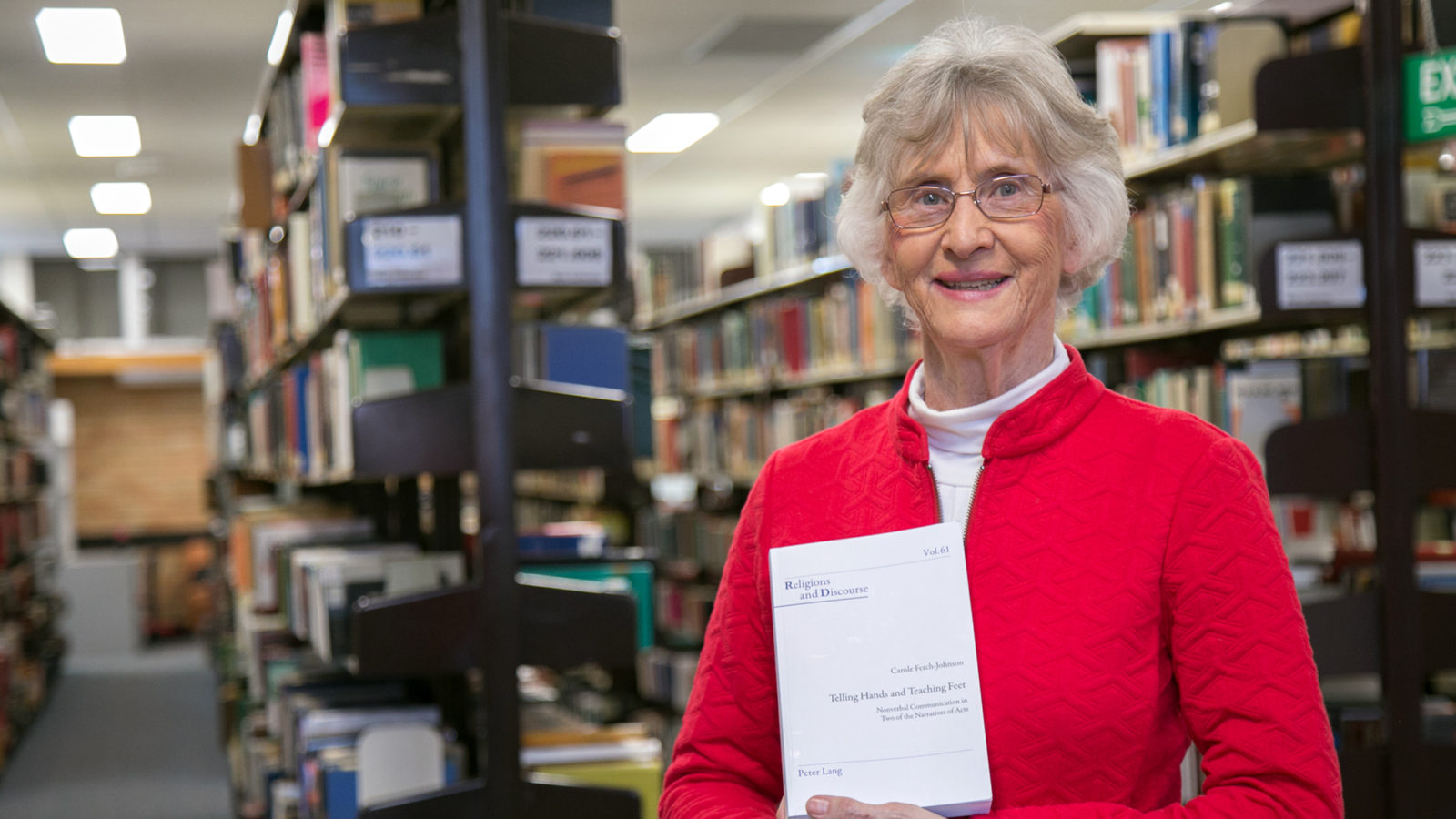An Avondale graduate’s doctoral research about how the early church used human hands and feet to fulfil the mission of Jesus is now a book.
Telling Hands and Teaching Feet: Nonverbal Communication in Two of the Narratives of Acts comes from a thesis Dr Carole Ferch-Johnson completed for her PhD through Avondale College of Higher Education in 2016. Peter Lang has now published the thesis as Volume 61 of its Religions and Discourse series.
Editor James Francis describes the book as a “fresh trajectory in scholarly exploration”. In an email to Ferch-Johnson, he writes, “You have done something to restore [the connection between metaphor and embodied living in the task of theology]. . . . Clergy ordination courses badly need to recover the vision you have grasped.”
Ferch-Johnson examined the healing by Peter and John of the lame beggar at the temple (Acts 3) and the conversion of Saul on the road to Damascus (Acts 9). She wanted to better understand how nonverbal communication functioned in the narratives, whether it transmitted meaning, what role it played in forming relationships, and whether it helped fulfil the mission of Jesus.
Little secondary literature about nonverbal communication in the New Testament meant Ferch-Johnson had to seek other sources: the use of hands and feet in Luke and Acts; the Greek works from Second Temple Judaism; the works of Greek authors quoted by Luke in Acts; and, because the narratives address healing, the medical works of Hippocrates and Soranus.
And what did she find? The use of hands and feet in the two narratives from Acts do communicate meaning—trust and confidence between healer and healed grows, with solidarity following—and do fulfil the mission of Jesus—the lame man is noticed, helped, healed and qualified to worship, while Saul is humbled, helped, forgiven, converted, healed, commissioned and baptised.
Avondale seminarian Professor Robert McIver describes Telling Hands and Teaching Feet as “timely” and as a “beautifully expressed exploration of the evidence”, while colleague Dr Norman Young, a conjoint associate professor, writes that Ferch-Johnson applies her findings “convincingly and with great skill”.
When he first heard Ferch-Johnson had been writing about hands and feet in Acts, Avondale president Professor Ray Roennfeldt thought, Why not choose a broader and deeper topic that examines the bigger picture of Scripture? “I was wrong!” he writes in the foreword. “Carole has in fact dug deeply into a topic that has attracted little scholarly attention in the past but which . . . has important implications for church and ministry in the 21st century.”
Ferch-Johnson lists four of these in her conclusion, noting that the dynamics of nonverbal communication as they appear in the text means “ministry to the whole person by the whole person is a Lucan principle” helping create identity and belonging through sharing. This implies a number of practical principles for community outreach, she writes, giving as examples hand- and foot-dependent ministries such as meal preparation for the sick and running, walking or cycling fundraisers for needy causes. These all “help fulfil the mission of Jesus”.
Given we have the potential to communicate more information nonverbally than verbally, Roennfeldt is surprised nonverbal communication is not given greater attention in biblical interpretation and application. “Could it be that . . . we may be losing the ability to see beyond the bare words of emails and tweets to real people?” he asks.
The focus on hands and feet comes from Luke 24:39-40, which describes a resurrected Jesus revealing His identity to the disciples by inviting them to look at His hands and His feet. Both are central to meaning and mission because they are at the heart of effective human interaction, says Ferch-Johnson. They are also at the extremities of the body and so “offer the first point of contact between people. Any sharing of Christ and His mission typically begins with hands and feet.” [pullquote]
A career in the people-helping professions, including pastoral counselling and hospital chaplaincy, drew Ferch-Johnson to this study of people in the Bible. “Throughout her book, we find Carole’s biblical scholarship connecting with her deep pastoral commitment to understand and value human relationships,” says Dr Carolyn Rickett, who served as an associate supervisor on Ferch-Johnson’s PhD team, with Dr Steven Thompson as primary supervisor. We also find how contemporary communication theories can “enrich our understanding and application of sacred and ancient texts,” she adds.
Perhaps it is not surprising, then, writes Roennfeldt, that Ferch-Johnson “should call us back to listening more carefully; not only to Scripture but to each other as well.”
Q’n’A: Dr Carole Ferch-Johnson
Your lifework and years of postgraduate study, all contained in one book. Is that how it feels?
Not entirely, but I would not have been able to write this book without the background in specialised ministry I am fortunate to have, and the life experience that’s been mine.
Even if readers of this article don’t read your book, what is the one thing they should remember to make their ministry more effective?
That nonverbal communication is more authentic than words and is more likely to accurately convey meaning in interpersonal interaction.
You’ve said emotional connection between people always costs. From your experience in the people-helping professions, what’s the pay-off?
A sense of purpose in dealing with people. Satisfaction from having helped another. Enriched relationships with others in general.






